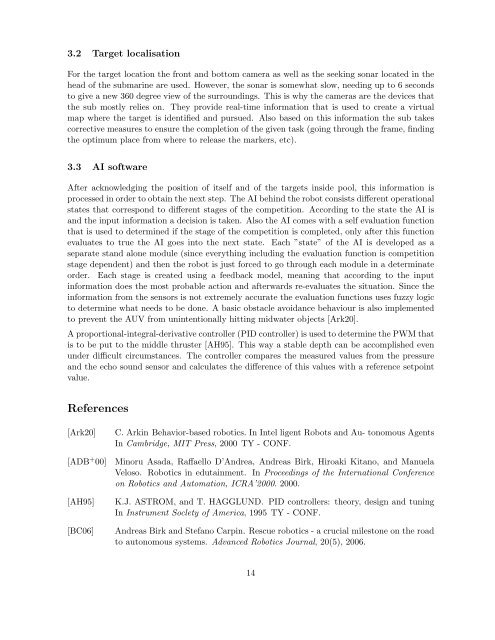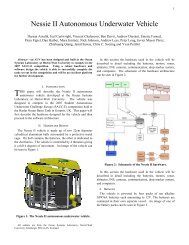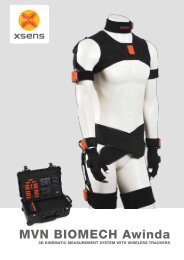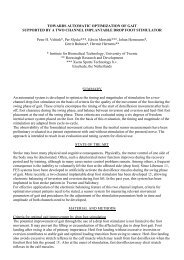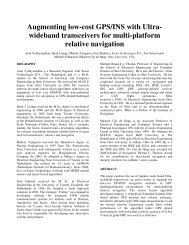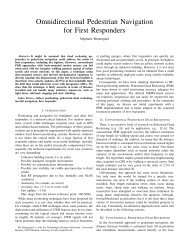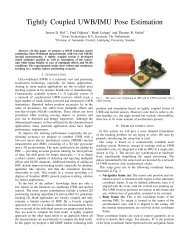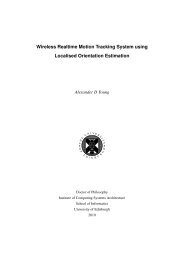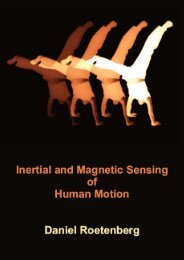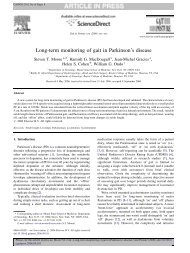SAUC-E IUB Team - Xsens
SAUC-E IUB Team - Xsens
SAUC-E IUB Team - Xsens
You also want an ePaper? Increase the reach of your titles
YUMPU automatically turns print PDFs into web optimized ePapers that Google loves.
3.2 Target localisation<br />
For the target location the front and bottom camera as well as the seeking sonar located in the<br />
head of the submarine are used. However, the sonar is somewhat slow, needing up to 6 seconds<br />
to give a new 360 degree view of the surroundings. This is why the cameras are the devices that<br />
the sub mostly relies on. They provide real-time information that is used to create a virtual<br />
map where the target is identified and pursued. Also based on this information the sub takes<br />
corrective measures to ensure the completion of the given task (going through the frame, finding<br />
the optimum place from where to release the markers, etc).<br />
3.3 AI software<br />
After acknowledging the position of itself and of the targets inside pool, this information is<br />
processed in order to obtain the next step. The AI behind the robot consists different operational<br />
states that correspond to different stages of the competition. According to the state the AI is<br />
and the input information a decision is taken. Also the AI comes with a self evaluation function<br />
that is used to determined if the stage of the competition is completed, only after this function<br />
evaluates to true the AI goes into the next state. Each ”state” of the AI is developed as a<br />
separate stand alone module (since everything including the evaluation function is competition<br />
stage dependent) and then the robot is just forced to go through each module in a determinate<br />
order. Each stage is created using a feedback model, meaning that according to the input<br />
information does the most probable action and afterwards re-evaluates the situation. Since the<br />
information from the sensors is not extremely accurate the evaluation functions uses fuzzy logic<br />
to determine what needs to be done. A basic obstacle avoidance behaviour is also implemented<br />
to prevent the AUV from unintentionally hitting midwater objects [Ark20].<br />
A proportional-integral-derivative controller (PID controller) is used to determine the PWM that<br />
is to be put to the middle thruster [AH95]. This way a stable depth can be accomplished even<br />
under difficult circumstances. The controller compares the measured values from the pressure<br />
and the echo sound sensor and calculates the difference of this values with a reference setpoint<br />
value.<br />
References<br />
[Ark20]<br />
[ADB + 00]<br />
[AH95]<br />
[BC06]<br />
C. Arkin Behavior-based robotics. In Intel ligent Robots and Au- tonomous Agents<br />
In Cambridge, MIT Press, 2000 TY - CONF.<br />
Minoru Asada, Raffaello D’Andrea, Andreas Birk, Hiroaki Kitano, and Manuela<br />
Veloso. Robotics in edutainment. In Proceedings of the International Conference<br />
on Robotics and Automation, ICRA’2000. 2000.<br />
K.J. ASTROM, and T. HAGGLUND. PID controllers: theory, design and tuning<br />
In Instrument Soclety of America, 1995 TY - CONF.<br />
Andreas Birk and Stefano Carpin. Rescue robotics - a crucial milestone on the road<br />
to autonomous systems. Advanced Robotics Journal, 20(5), 2006.<br />
14


